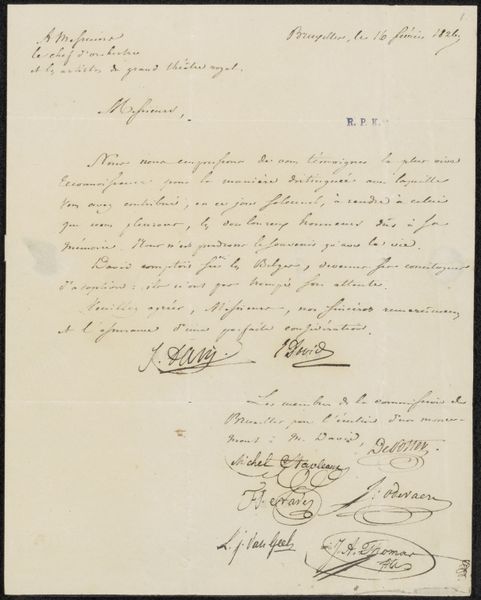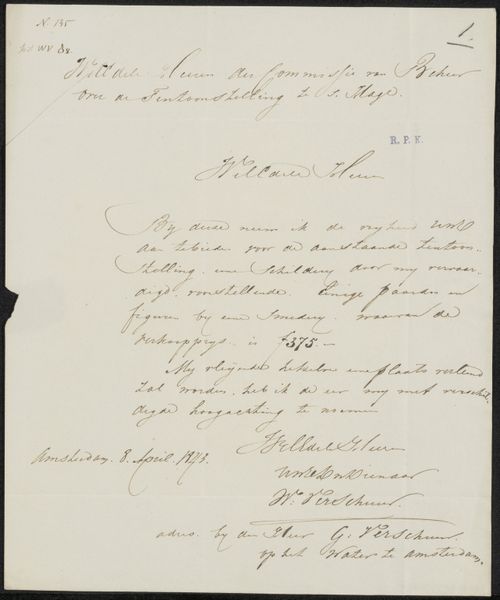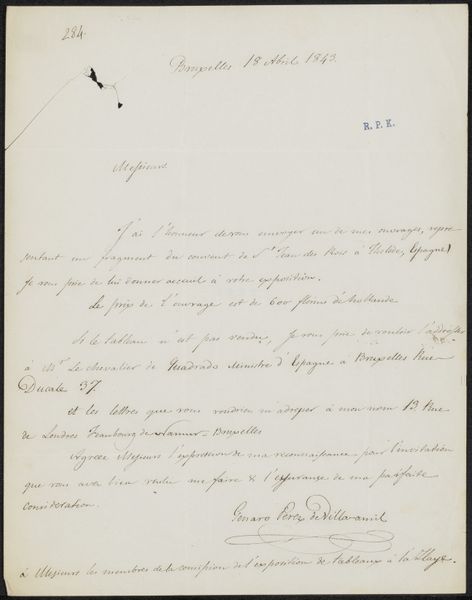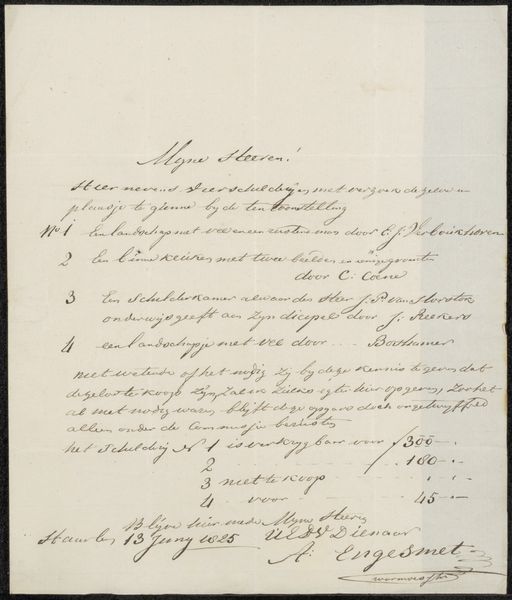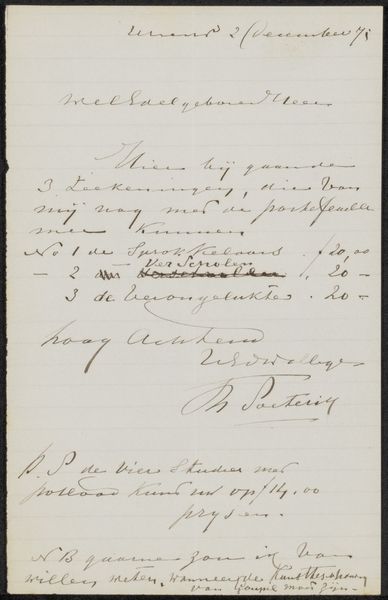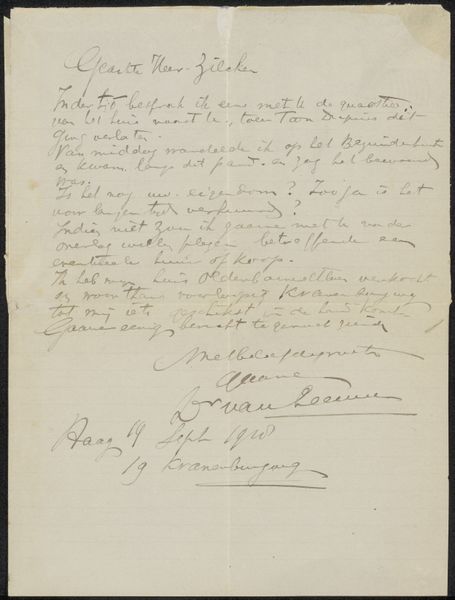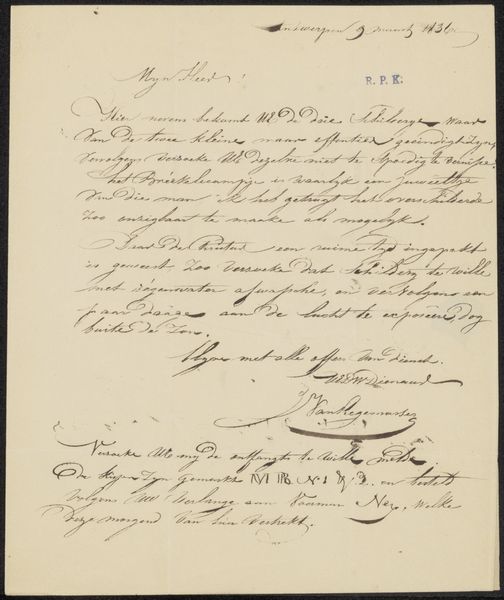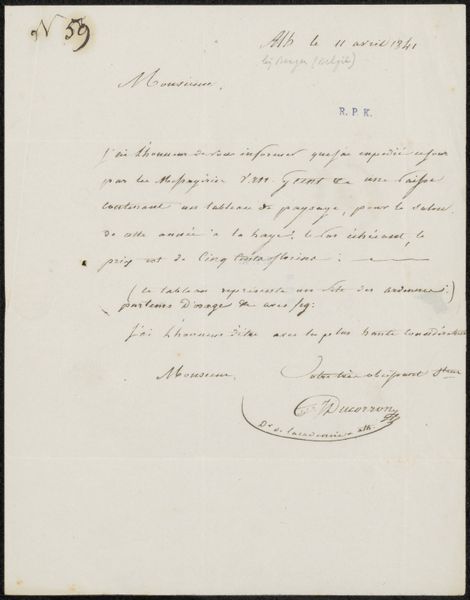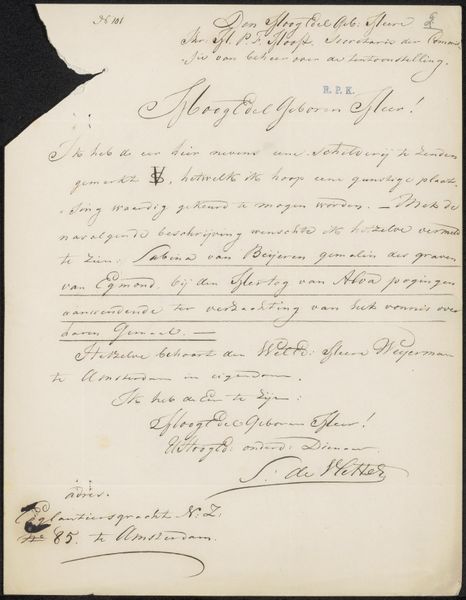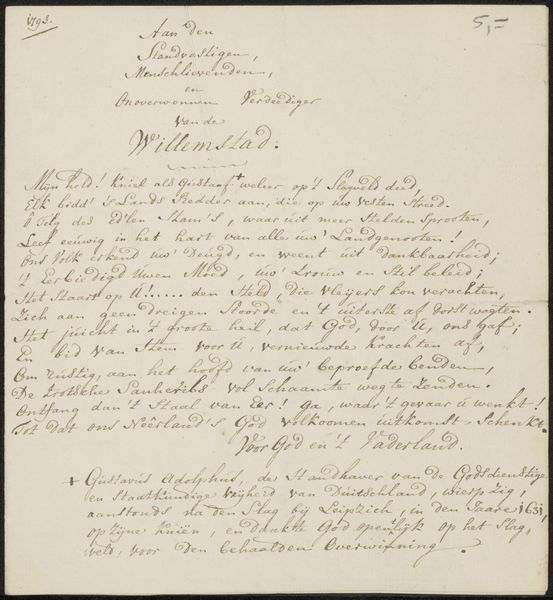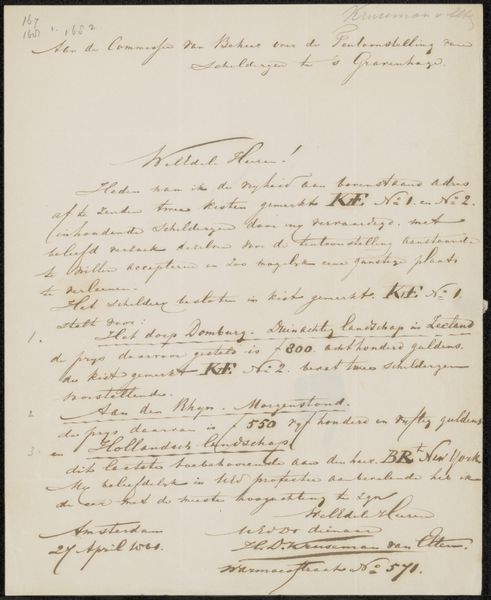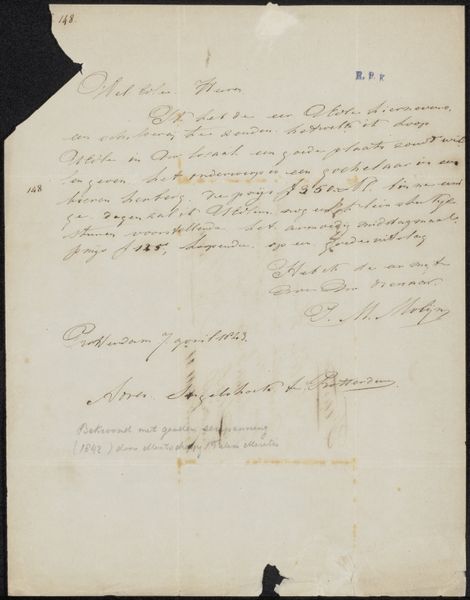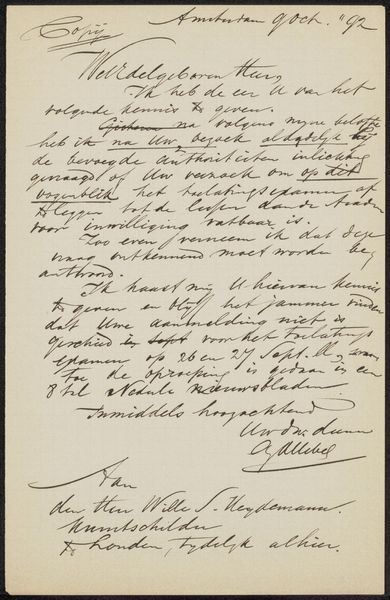
Brief aan Pieter Verloren van Themaat, secretaris van de Commissie van de Tentoonstelling van Levende Meesters in Utrecht Possibly 1866
0:00
0:00
drawing, paper, ink, pen
#
portrait
#
drawing
#
dutch-golden-age
#
paper
#
ink
#
pen
#
academic-art
Copyright: Rijks Museum: Open Domain
Curator: This is a fascinating piece titled "Brief aan Pieter Verloren van Themaat, secretaris van de Commissie van de Tentoonstelling van Levende Meesters in Utrecht," likely from 1866. It's a pen and ink drawing on paper by Jan Gerard Smits. Editor: It gives an impression of a flurry, all those handwritten lines pressing across the page. Curator: Exactly. Consider the script itself. The line, weight, and flow contribute to the composition, creating visual rhythm and texture. Notice the loops and flourishes, particularly in the salutation and signature. Semiotically, each stroke speaks to a cultured, learned hand. Editor: And what labor went into that hand! Imagine the sheer hours of disciplined training required for such precise, elegant penmanship. This wasn't simply writing, it was a craft. The controlled strokes suggest an attention to detail, perhaps even pride in the work itself. Curator: True, but let's not reduce it solely to its creation. It is important to recognize that Jan Gerard Smits was trying to communicate ideas, requests, or possibly an appeal, but there are specific cultural standards to this formal mode of address. Note how such conventions impose a certain structure. Editor: However, what about the materiality of ink? Where was it sourced? What kind of paper was used and how would this affect production, how much paper was affordable in that day? How did these factors inform Smits' art or letter-making decisions, considering access and labor practices. Curator: Yes, material constraints and availability would certainly be part of the overall socio-historical matrix. But to see the letter *only* through those lenses seems like an oversimplification. Editor: Perhaps, yet considering these questions invites deeper explorations of art's connections to society, inviting a fresh perspective of value that moves beyond the surface! Curator: Very well. It offers a complex vision of art history, intertwining aesthetic concerns with socio-economic context. Editor: And prompting new avenues of reflection.
Comments
No comments
Be the first to comment and join the conversation on the ultimate creative platform.
